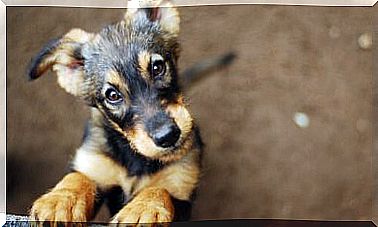The Language Of Dogs… Do You Understand Your Pet?

You feel that you and your pet have a bad communication and you would like to get closer to him. Understanding the language of dogs, their language, which is the instrument they use to communicate their needs, mood and health is extremely important, therefore we leave you some recommendations so that you can understand your pet:
The first thing to keep in mind to understand your dog’s language is experience and coexistence. Over the years you get used to certain habits that your dog develops, whether they are the product of his instinct or that he has acquired as a specific characteristic of his personality, and you can even know what it means when he barks in a certain way, or when he is moves in a certain way.
However, there are certain elements of your language that we tend to overlook and can tell us important things, so let’s look at some of its most important characteristics:
They communicate with the whole body

Because we are verbalized beings, it is sometimes very difficult for us to detect the importance of our body in the communication process. Gestures, clothing, movements … All this is strongly related to what we communicate.
The language of animals is, so to speak, more rudimentary and for them body language is of great importance. In the case of dogs, they not only use their voices (barking, moaning, howling), but their body is their main vehicle of communication.
Some signs of communication in dogs can be detected in:
- Gesticulation : If you look closely at your pet’s face, you will be able to notice that it shows signs of curiosity, joy or fear, among a wide range of feelings through its facial gestures. For example, when he is fearful, his pupils tend to dilate, and when he is willing to play he usually shows a slight smile.
- The ears : The ears can give you a lot of information about what is going through your dog’s mind. When you pay attention to something, you tend to pick them up and try to trace the source of the sound. They also bend them down in submission or push them back while tense the body when in a state of alert.
- The tail : Dogs wag their tails for different reasons , generally indicating moods. When he is happy or anxious he will move it quickly; if he is afraid or threatened, he will hide it between his legs.
Vocalization

The barking of dogs can also have multiple meanings and, through these, they will make us understand many of their needs or their state of mind.
A dog that growls while showing its teeth and tenses is in the attack position and is giving us a warning, so it is best to stay away from it. If your barks are loud and ecstatic, you can show feelings of satisfaction, especially if your body remains relaxed.
If he barks in the direction of the door, it may indicate that someone has arrived, or there is something in the street that he considers threatening and tries to warn you.
In general, dogs use the tones of the barks in the same way that we use the tone of the voice, being able to express anger, fear or sadness. For example, a dog in fear will make irregular growls and some squeals. On the contrary, if he is happy he will growl in a low tone, exposing his teeth.
Howling can be a sign of physical pain, especially when it comes unexpectedly, for example, colic. They can also indicate fear and anxiety, especially when it tucks its tail between its legs. If he howls in a breathy way, varying the tone and alternating it with barking, the dog is trying to get the attention of the handler to indicate that there is something that he considers abnormal, even dangerous.
Moaning can be a sign of illness, hunger, cold, or fear. Although this is more common in puppies, it can occur in adults as a reflex action.
Sighs can denote pleasure or frustration, they are also the product of boredom or physical fatigue.
So, now you know, understanding your pet will not be difficult. You just have to carefully observe his behavior and see what kind of situations are those that generate the attitudes he develops.









